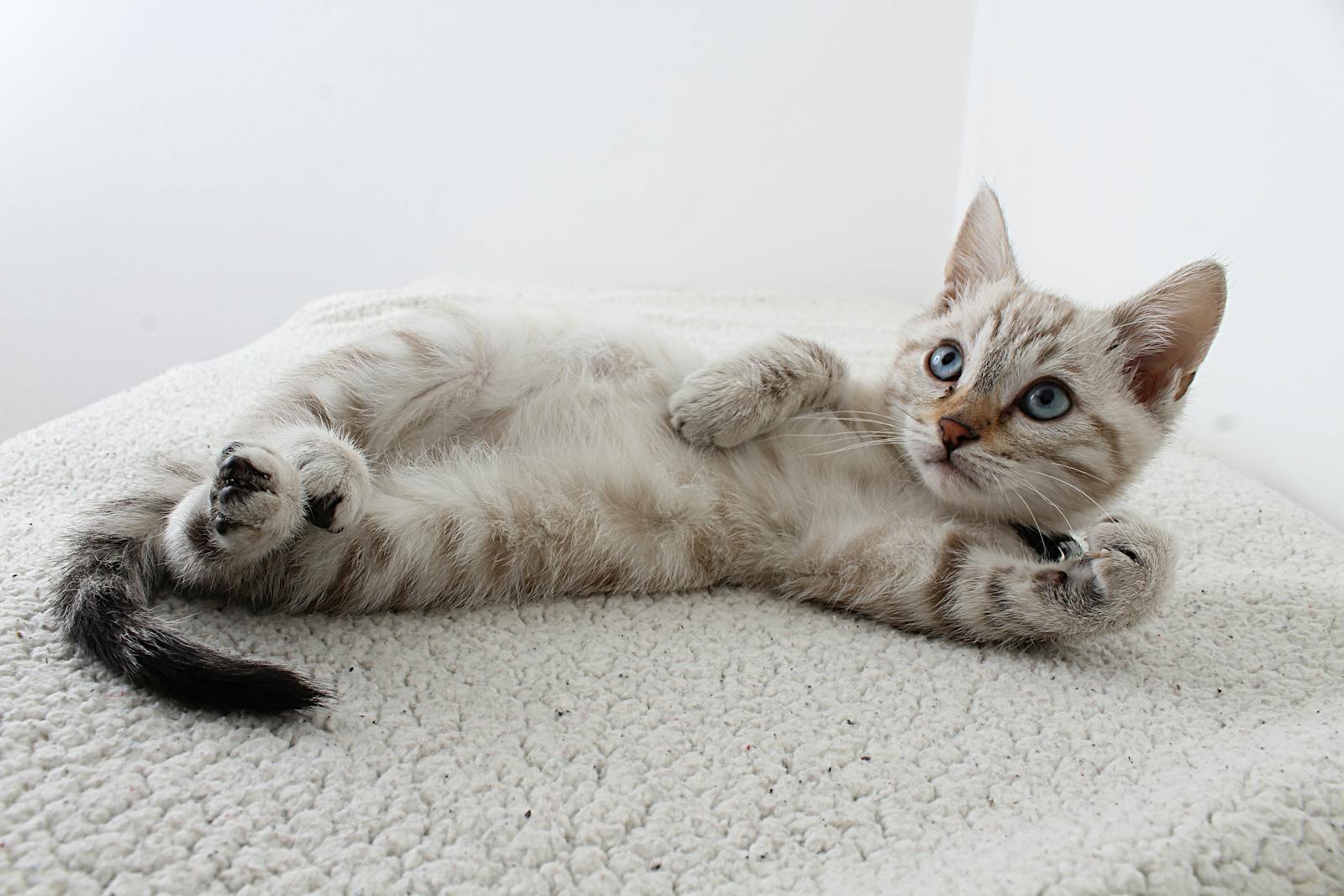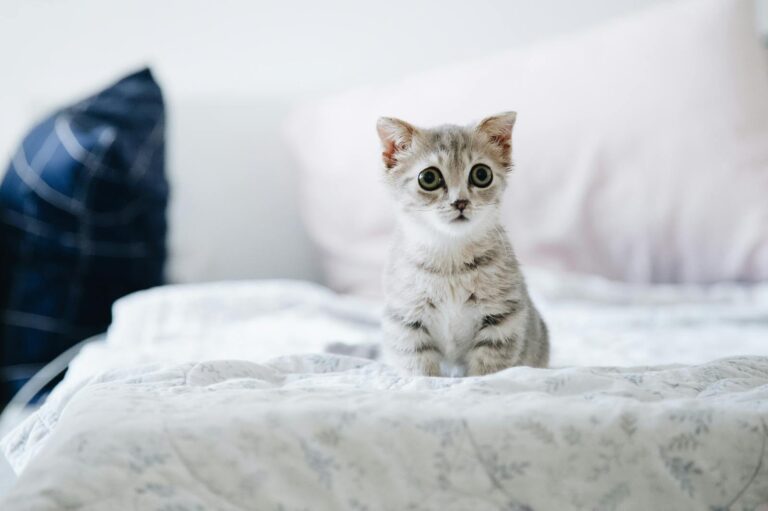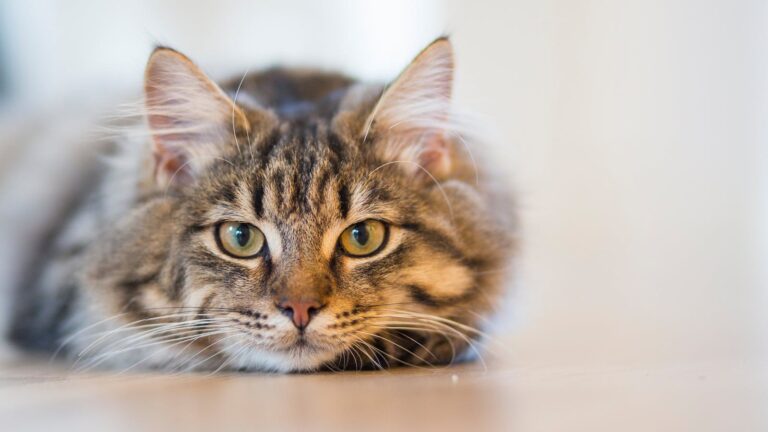What Your Cat’s Sleeping Position Says About Them – Unraveling Feline Mysteries
Have you ever found yourself staring at your cat in a peculiar sleeping position, wondering what it could mean? Cats are fascinating creatures, and their sleep habits can tell us more about them than we might think. What Your Cat’s Sleeping Position Says About Them is an intriguing topic that unveils the mysteries of feline behavior and personality traits. Understanding these sleep postures not only enhances our bond with our furry friends but also helps us ensure their happiness and well-being.
The Importance of Sleep in a Cat’s Life
Cats are known for being champion sleepers, spending an average of 12 to 16 hours per day dozing off. To understand what your cat’s sleeping position says about them, it’s essential first to appreciate the significance of sleep in their lives.
Cats have specific sleep cycles that differ from humans, often characterized by short bursts of deep sleep interspersed with periods of lighter sleep. During these phases, they may exhibit various positions that reflect their level of comfort, security, and even mood.
Understanding Sleep Cycles
Sleep in cats can be divided into two main types: Non-Rapid Eye Movement (NREM) sleep and Rapid Eye Movement (REM) sleep.
During NREM sleep, your cat’s body relaxes, heart rate decreases, and brain activity slows down. This phase allows for recuperation and energy restoration.
Conversely, REM sleep is when dreaming occurs. You might notice your cat twitching its whiskers, paws, or ears during this stage, indicating they’re engaged in dream activity. This phase is crucial for learning and memory retention, making it just as important as NREM sleep.
How Sleep Positions Reflect Behavior
Your cat’s choice of sleeping position can indicate its personality traits and emotional state. For instance:
- A cat that curls up tightly may be feeling vulnerable and seeks warmth and comfort.
- A sprawled-out position may suggest confidence and relaxation, indicating that your cat feels safe in its environment.
Understanding these positions offers insight into how your cat perceives its surroundings and interactions.
Factors Influencing Sleep Patterns
Several factors influence a cat’s sleep patterns, including age, health, environment, and even individual temperament.
Kittens tend to sleep more than adult cats as they require extra rest for growth. Older cats may also experience changes in sleep patterns due to health issues like arthritis or other conditions.
A cat’s environment plays a significant role too—cats that feel insecure or stressed may exhibit different behaviors compared to those in a stable, nurturing setting.
Common Sleeping Positions and Their Meanings
Now that we understand the importance of sleep let’s delve deeper into specific sleeping positions and decipher what your cat’s sleeping position says about them. Each position provides unique insights into your cat’s personality and emotional state.
The Curl-Up
When cats curl into a tight ball while sleeping, they are exhibiting a common behavior that reflects both comfort and vulnerability.
This position is often adopted during colder weather or when your cat feels the need to conserve body heat. By curling up, they protect their vital organs while also creating a sense of security.
Moreover, this position may indicate a general mood of caution. If your cat frequently sleeps curled up, it may feel anxious or uncertain in its environment. Providing a cozy blanket or a designated safe space can help them feel more secure.
The Side Sleeper
Cats that sleep on their sides, with legs outstretched, demonstrate a relaxed state. This position indicates a high level of comfort and trust in their surroundings.
Side sleeping suggests that your cat feels safe enough to expose its belly—the most vulnerable part of its body. This behavior is often linked to a confident and secure personality. Such cats typically enjoy social interactions and may seek your companionship actively.
Pay attention to how often your cat chooses this position, as it can signify their overall well-being and happiness.
The Belly-Up
When a cat sleeps belly-up, it embodies a display of complete trust. This position is quite rare, as exposing the belly makes them vulnerable to potential predators.
Cats that choose this position usually feel incredibly secure in their environment, suggesting they have a strong bond with their human companions. However, it’s important to note that this position doesn’t always invite belly rubs. Some cats may interpret attempts to touch their belly as an invasion of space.
If your cat sleeps in this position frequently, consider it a compliment to the safe space you’ve created for them.
The Cuddle Bug
Some cats enjoy snuggling close to their owners or other pets while sleeping. This cuddling behavior signifies warmth, affection, and strong social bonds.
When a cat presses against you, it shows that it seeks comfort and safety within your presence. This position also reflects their affectionate nature and desire for companionship.
Encouraging this behavior can strengthen the bond you share with your feline friend. Creating a safe, calming environment where your cat feels comfortable approaching you can enhance this cuddle bug tendency.
| Sleeping Position | Meaning |
|---|---|
| Curl-Up | Vulnerability, seeking warmth |
| Side Sleeper | Trust, comfort, high self-confidence |
| Belly-Up | Complete trust, strong bond with owner |
| The Cuddle Bug | Affection, seeking companionship |
The Relationship Between Environment and Sleeping Positions
It’s important to realize that your cat’s sleeping positions aren’t solely about their physical state; they’re also deeply influenced by their environment. Understanding this relationship can provide further insights into what your cat’s sleeping position says about them.
The Safe Space
Creating a secure environment is vital for your cat’s overall well-being. Cats often seek out quiet, secluded areas when they want to feel safe.
The choice of sleeping location can indicate how they perceive their home. For example, if your cat prefers to sleep under a bed or inside a closet, it may signal insecurity or anxiety about their surroundings. Investing in cozy hideaways or elevated spaces can promote a sense of security and comfort for your feline friend.
Temperature and Comfort
Temperature plays a considerable role in determining your cat’s sleeping position. Cats instinctively seek warmth, especially in cooler weather.
You may notice your cat curling up during cold nights and sprawling out when it’s warm. This behavior is entirely natural and stems from their instincts. Observing these patterns can help you create a comfortable environment that caters to their needs.
Consider providing options for cozy bedding, allowing your cat to choose their preferred sleeping arrangement based on the temperature.
External Stressors
External factors such as noise, activity levels, and household dynamics can significantly impact your cat’s sleeping behaviors.
If there are frequent disturbances, such as loud noises or the presence of unfamiliar animals, your cat may respond by choosing more defensive sleeping positions, like curling up tightly or hiding away.
Creating a tranquil environment can reduce stress and encourage your cat to adopt more relaxed sleeping positions.
Changes in Routine
Changes in routine, such as moving homes, bringing in new pets, or alterations in the household, can disrupt your cat’s sleeping habits.
In response, you may see shifts in sleeping positions that reflect their emotional state. Keeping an eye on these changes can help you assess your cat’s comfort level and adapt accordingly.
Behavioral Signals Linked to Sleeping Positions
Beyond the immediate interpretations of sleeping positions, cats communicate through their body language while at rest. Recognizing these behavioral signals can deepen your understanding of what your cat’s sleeping position says about them.
Tail Positioning
While your cat may be asleep, observing the position of its tail can reveal a wealth of information.
A relaxed, loosely positioned tail indicates ease and comfort, while a tail tucked against the body may suggest unease or discomfort. If you notice any abrupt changes in tail positioning during sleep, it could point to underlying stress or discomfort in your feline friend.
Whisker Movements
Even in slumber, your cat’s whiskers remain sensitive to environmental stimuli.
Twitching or movement of the whiskers while sleeping may suggest dreaming or responding to sounds around them. If your cat exhibits active whisker movement, it may imply that they are engaged in a dream or processing experiences from their waking hours.
Purring and Other Sounds
Purring is commonly associated with contentment, but cats may also purr while sleeping.
This vocalization could signify reassurance and comfort in their surroundings. Alternatively, if your cat appears restless or occasionally hisses or growls in its sleep, it may indicate stress or anxiety.
Being attuned to these vocalizations can help you make informed decisions about your cat’s environment and care.
Body Language Beyond Sleep
Observing your cat’s behavior outside of sleep can also provide valuable insights into their personality and emotional state.
Look for signs of playfulness, curiosity, or timidity during their waking hours. By understanding their daytime behavior, you can better interpret the meanings behind their sleeping positions.
Conclusion
In summary, what your cat’s sleeping position says about them reveals a fascinating world of feline behavior and emotions. From curled-up positions indicating vulnerability to sprawled-out stances reflecting trust and confidence, each posture carries unique meanings. By considering factors like environment, temperature, and external stressors, we can foster a supportive atmosphere that encourages our cats to express themselves comfortably. Recognizing behavioral signals linked to sleeping positions allows us to deepen our understanding of our feline companions and enhance our connections with them. Ultimately, the more we learn about our cats’ sleeping habits, the better we can nurture their well-being and happiness.







